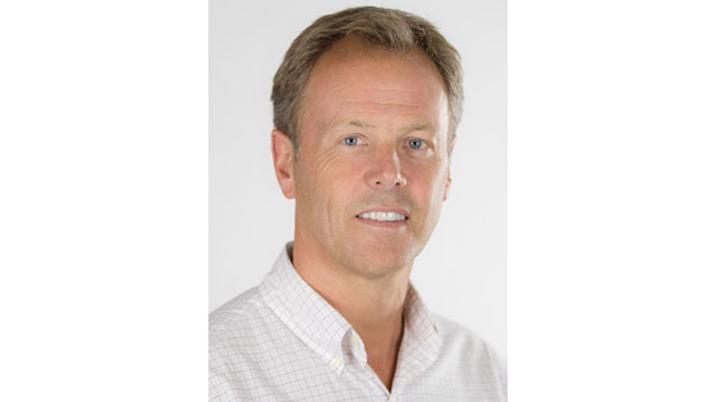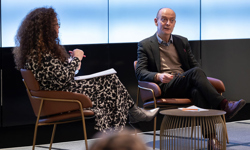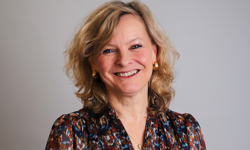
There are only so many ways you can fill a tooth, Ken Finlayson, chief executive officer of dentistry information specialist FMC, readily admits. Yet, quite literally, dozens of print and digital magazines serve the UK’s dental market. Which is why staying closest to the audience and continual evolution are the only ways to stay ahead, he says.
FMC is one of UK dentistry’s leading content publishing players. It was launched by Finlayson back in 1995 when he started Dentistry magazine (then known as Dentistry Monthly, now published fortnightly. However, the company now positions itself as a ‘dental communications business’ and the sector’s leading ‘dental information’ player.
Back at launch, Finlayson – whose background was commercial rather than editorial - had a simple goal.
“My ambition was to have a significant healthcare media business,” he explains.
Origins
In 1995, dental publishing in the UK was scientific in focus. But having travelled to the US to research what was happening there, Finlayson identified an opportunity for a UK title that was more popular and practical in its focus than others already available.
Furthermore, though UK dentistry publishing was a market with a number of pre-existing players, no one player dominated. So, FMC built its business by developing a string of niche products which, over the years, have built into a portfolio comprising more than twenty brands straddling magazines and journals, live events and websites.
“We developed our position in dentistry as it was apparent we could develop in that space and dominate rather than get into lots of different medical silos,” he adds.
“And that’s where we are today: still in the dental market, though now with a mix of print and digital, awards and events - all driven by the opportunities that have unfolded in that market right in front of us over the years since.”
Today, FMC’s biggest publication is Dentistry, which has an ABC circulation for its last audited full year of 20,596. It is the market leader by ad revenue and circulation, says Finlayson.
But the business also includes specialist titles such as Aesthetic Dentistry and Oral Health; websites including dentistry.co.uk; live events such as recently launched annual symposium The Stars of Dentistry; and a data and marketing services division. The latter evolved in direct response to the two audiences FMC services - dentists and their suppliers in the dental industry: the manufacturers.
In total, FMC now publishes 60,000 magazines each month targeting the UK’s 25,000 practicing dentists working in the field of ‘general dentistry’ (as distinct from academic medical dentistry). And the business’s profits are growing rapidly – for the time being, at least.
FMC is not in a boom and bust business, Finlayson is quick to point out. But it is a fact that in dentistry, elective dentistry is a privately-funded thing. And this means when people are better off, they spend more – as they are currently doing in what he calls “a bubble” in the run up to Brexit.
“Our profits grew 45% year-on-year in the 2016 financial year and we expect a further 40% year-on-year growth in 2017,” Finlayson reveals.
He talks of a positive ‘pre-Brexit’ effect and uncertainty surrounding what will happen ‘post-Brexit’. Even so, he is confident that the FMC audience’s demand for dentistry-related content is and will continue to be fuelled by what it has always been fuelled by: the desire to stay informed about best practice and latest developments – both within the UK and internationally.
For this reason, ever since the business was launched, FMC has worked closely with dentists by establishing advisory boards of experts for each of its products. Finlayson describes the 250 dentists it now regularly works with as invaluable and calls them FMC’s “eyes and ears”.
“Our philosophy has always been to get really close to the audience to understand their developing interests and evolve our proposition accordingly – it’s a never-ending thing,” he explains.
The profit imperative
As is the business’s commitment to iterative product development.
“If we launch anything, it must make a profit and that’s it. If a business case was that we’d make a profit in year three, we wouldn’t touch it, it’s as simple as that,” he continues.
“Yes, we’ve had launches that haven’t worked but then we have re-invented. Oral Health began as a title for women in dentistry, then a title about preventive dentistry before what it is today. The key is not to waste the energy or subscription base we have picked up. So, if we can, we will always find a way of re-organising.”
What with a number of other players in the dentistry marketplace – George Warman Publications, for example, and Springer Nature - plus the greater availability of information direct from suppliers and manufacturers now available to dentists online, competition amongst content providers is fierce.
The audience, meanwhile, is becoming increasingly demanding. Once, dentists were content with just a printed product. Then demand grew for blockbuster live events. Now, however, Finlayson says that FMC sees its greatest opportunity moving forward in developing niche exhibition / conference hybrids.
“If you did what you did five years ago, you’d now struggle to make it pay,” he says, highlighting UK dentists’ increasingly discerning discretionary spending on professional content services.
“There is going to be a move away from large, one size fits all exhibitions and we are developing a much bigger range of tailored exhibition-type targeted ‘super meetings’ to cater for people’s more specific interests,” he predicts.
“What the marketplace is now calling for is a much more segmented approach.”
The growth potential of events and exhibitions is more significant than publications, Finlayson believes. Yet, in spite of this, he expects demand for the business’s print magazines (which currently account for 50% of revenues) to continue for a good few years yet as awards and seminars’ share of revenue (currently 30%) and digital (20%) continue to grow.
Global aspirations
That said, an important pillar for the next stage of the development of the Hertfordshire-based company with its 45-strong workforce will be building its international footprint by expanding distribution for its magazines and journals – and demand for its events – overseas.
“An international presence is something we are extremely interested in developing,” says Finlayson. When it comes to just how, however, he is reticent. And when you consider FMC’s recent history, it’s not hard to see why.
Back in 2007, Finlayson’s hopes were high when the acquisition of FMC by Springer looked set to take the business global. However, the subsequent worldwide financial crisis quickly put paid to that and, not long after, Finlayson bought his business back.
The episode was a result of bad timing, he now says, making the point that relations between FMC and Springer remain positive. But it also left FMC a relatively small, independent, UK-based player which means international growth is slow and, at times, frustrating.
Over the years, FMC has struck a number of market-by-market deals that have resulted in distribution of some of its titles in the US, Australia, Russia, India, Portugal and Turkey. But it has also tried and failed to gain a foothold in China and Brazil.
“The problem is that different cultures come with different rules,” Finlayson says.
FMC does have three titles in the US through an arrangement with a small, niche publisher but a deal it was trying to do for nationwide distribution fell through. Subsequent discussions for more widespread distribution, meanwhile, remain ongoing.
“What you need is a major strategic partner who really cares about you and who you can trust and work with – and I am working on that,” he adds.
“We are currently discussing a global strategic partnership with a multi-national organisation so we can utilise their structure and gain credibility in new markets. It’s hard work, but it’s what I believe you need to do.”
A people business
The message is clear: the international marketplace offers significant growth potential for FMC, if it can get the structure right. And, of course, if it can recruit and retain the right talent.
“People are central to the success of this company – we invest in training and motivation: we have all kinds of incentives to encourage people to be positive and stay with us, and many do,” he enthuses.
Finlayson is a firm believer in the management philosophy of creating leaders then trusting them enough to let them get on with business. “Many of the people who work with me have been with me my whole career. They are the knowledge and the heart of FMC,” he adds.
Despite having sold then bought back FMC, Finlayson says he is firmly committed to staying at the helm of the company he built from scratch for “the foreseeable future”.
“Looking ahead, I want us to continue to be at the centre of the sector we serve to make sure we are inventing and reflecting what our marketplace wants and needs,” he pledges. “Compared to anyone else in this marketplace, we have a far bigger team here at FMC, so it’s easier to maintain that than it might be for one of our competitors. A priority is to build on that.”












